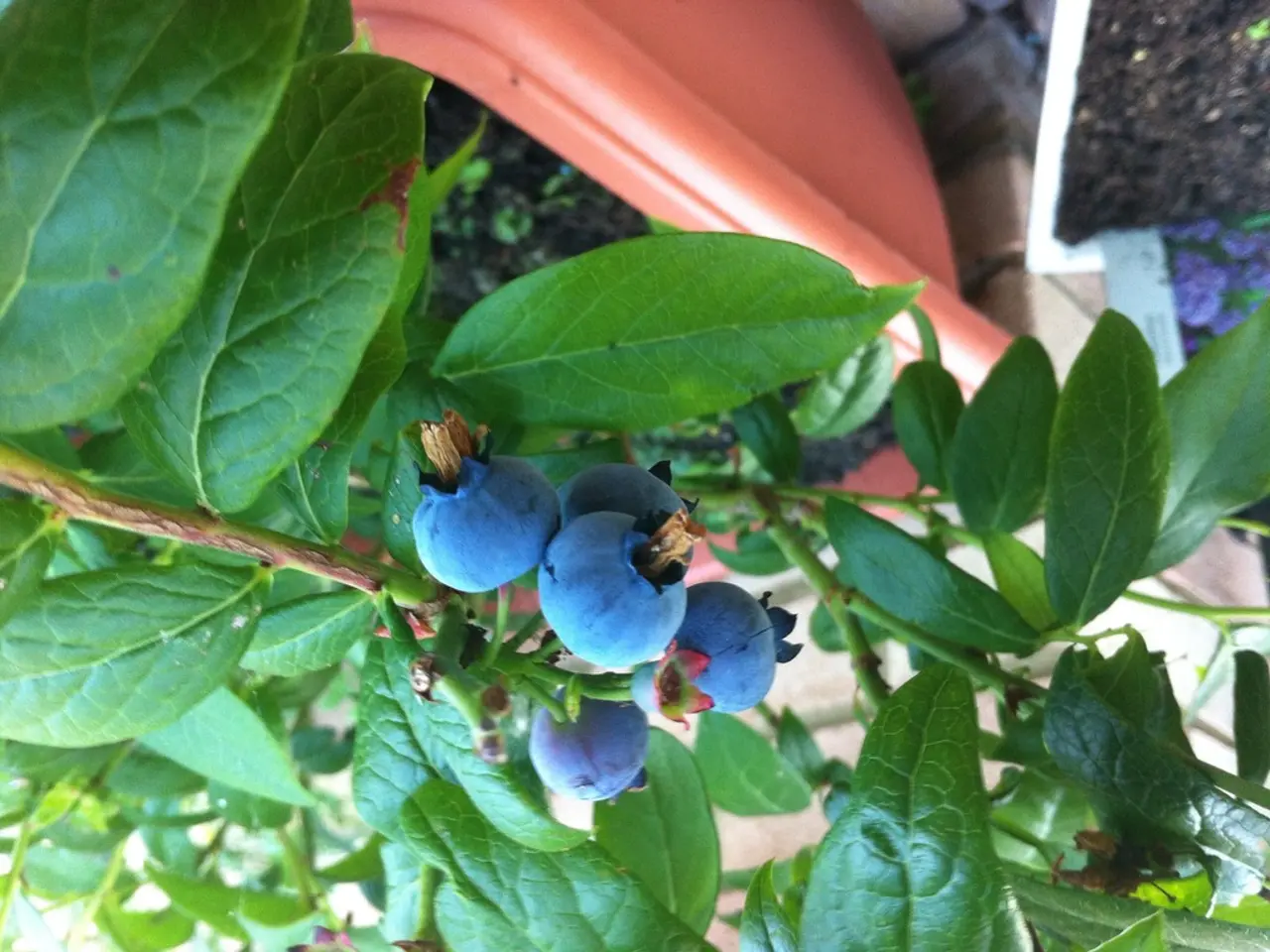Blueberry Fertilization Timing in Georgia: Crucial Seasonal Insights
==================================================================================
Glen, an experienced gardener with over 15 years of hands-on experience in garden maintenance, design, and landscaping services, has recently shared valuable insights on growing blueberries in Georgia. This popular garden choice offers healthy and delicious fruit, with the state boasting a variety of popular blueberry varieties such as Rabbiteye, highbush, and southern highbush.
According to Glen, the recommended fertilizing strategy for blueberry plants in Georgia is to fertilize twice a year: once in early spring before new growth begins, and a second time after the harvest. It is not necessary to fertilize at the planting time. Using fertilizers formulated for acid-loving plants or fruit-tree specific balanced fertilizers is advised, as blueberries require acidic soil with a pH between 4.5 and 5.5. Slow-release acidic fertilizers or a combination of a regular slow-release fertilizer plus a soil acidifier can help maintain proper soil acidity.
Avoid over-fertilizing to prevent excessive vegetative growth. Overfertilization can cause root damage and nutrient imbalances, leading to less than optimal fruit production. Urea fertilizer provides nitrogen but should be used carefully to avoid overfertilization.
For the best results, fertilize blueberries in early spring and right after harvesting. Regular soil testing is important to maintain a balance of micronutrients like magnesium and iron. After planting, mulch around each bush to retain moisture and keep weeds at bay. Water the plants well after mulching, ensuring they receive at least 1-2 inches of water per week, especially in the first growing season. In fall, applying another layer of mulch helps insulate the roots from cold weather.
Deep watering blueberry plants at least twice a week during summer is crucial due to shallow roots. For young plants under two years, a second application of slow-release fertilizers like ammonium sulfate in early summer is beneficial.
In addition to fertilizing, proper airflow around blueberry plants can prevent diseases like root rot by spacing them adequately and pruning wisely. Pruning blueberry bushes in late winter or early spring before bud break helps promote new growth. Supplemental feeding can be beneficial during periods of rapid growth, especially when leaves start yellowing.
Plant blueberries in early spring, spacing them 4-6 feet apart. Fertilizing blueberry plants in early spring with granular fertilizers like 10-10-10 or 12-4-8 is recommended.
By following this fertilizing schedule and care guidelines, blueberry growers in Georgia can support healthy fruit development and plant vigor, ensuring a bountiful harvest of delicious blueberries.
[1] Glen's latest posts: "Garden Fungicides: Essential Tips for Disease-Free Plants", "When to Pick Candy Cane Peppers: Optimal Harvest Time Guide", and "When to Pick My Watermelon: A Gardener's Guide". [2] Additional resources: Blueberry Growing Guide and Blueberry Fertilization Guide by the University of Georgia Extension. [4] For more information on blueberry care, visit Glen's gardening blog at www.glengardeningblog.com.
Incorporating Glen's gardening advice, home-and-garden enthusiasts might find it beneficial to expand their lifestyle by adding a blueberry plantation to their backyard. With the right fertilizing schedule and care guidelines, one could potentially enjoy a thriving home-and-garden accompanied by a bountiful harvest of delicious blueberries.




